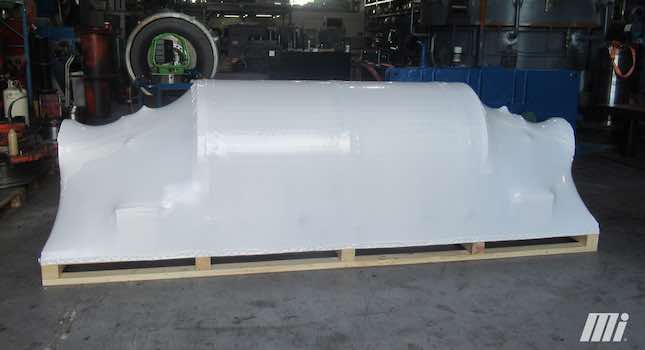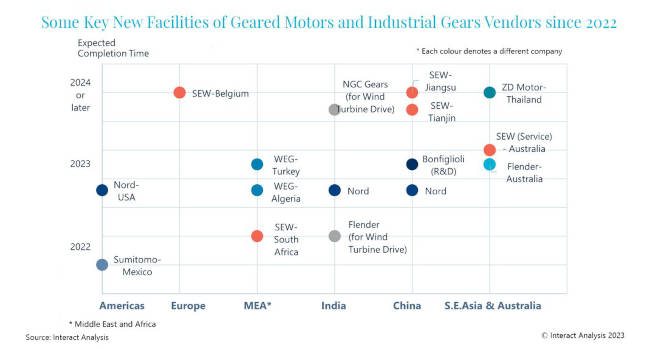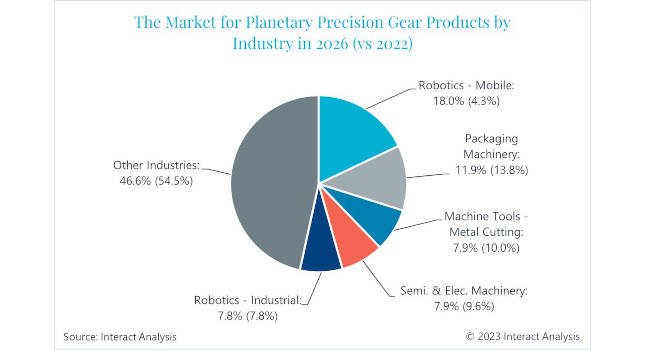Nothing can be managed until it is measured. And measuring electric energy use is crucial to bringing its cost under control. For most facilities, electricity use is measured at just one point: the utility electric meter.
Nothing can be managed until it is measured. And measuring electric energy use is crucial to bringing its cost under control. For most facilities, electricity use is measured at just one point: the utility electric meter. Allocating energy costs to specific activities can be extremely difficult, tedious, or futile when based on utility meter readings of kWhr consumption (a single, very large number).
Submetering of plant electric distribution systems provides powerful information about where, when, and how electric energy is used. With such information at hand, energy managers are better equipped to make important decisions that improve efficiency and save electric energy.
Surprisingly, utility estimates indicate that only 2%-5% of manufacturing facilities currently submeter, even though adding submetering to a plant electric system can decrease energy use by several percent. Five compelling reasons to install electric submetering are presented in this article.
1 Verify utility bills. Imagine paying every credit card bill you receive without even considering whether all the charges really are yours. Few bills are taken “on faith” as much as electric power. Month after month, energy bills roll in and are routinely paid by accounting personnel, who can only check for math errors.
Given the many thousands, or even millions, of dollars paid for energy every year by operators of industrial facilities, catching even a small error (such as demand charges) could recoup an investment in electric submetering in one swift stroke. But even if a submetering system turns up no utility errors, being able to independently verify an energy supplier’s billing can improve the user’s negotiating position.
2 Allocate energy costs and assign accountability. One of the hallmarks of a good manager is knowing how much each of the many elements of a manufacturing process contributes to a product’s final cost. Labor, raw materials, capital equipment, maintenance, and environmental expenses are often included in product cost calculations. However, the cost of electric power often is not directly counted. It is rare for managers to know how many kWhr are consumed in making a given product.
The importance of assigning electric energy costs is acknowledged in some common accounting methods that attempt to allocate these expenses based on square footage of floor space, number of workers, or capacity of the electric supply circuits. However, these methods have the disadvantage of spreading energy savings that originate in one area throughout an entire facility. They provide no incentive for departments within a facility to reduce their own energy use. These methods also provide virtually no guidance for future energy efficiency planning decisions.
Unfortunately, energy efficiency often ranks low on the list of criteria by which managers are evaluated. In most cases, this condition is the result of inadequate information. Monthly energy cost allocations to departments can provide standards by which managers’ performance can be measured.
Simply making energy efficiency a factor considered in managers’ annual performance evaluations can shave a couple of percentage points from a company’s overall energy expenses through such voluntary measures as turning off lights, HVAC, and machinery when not needed, and fixing compressed air leaks.
3 Determine equipment and system efficiency. Is the energy efficiency of installed office or manufacturing equipment acceptable? The only way to know is through measurement. If electric submeters are strategically positioned on circuits that feed key pieces of equipment, energy managers can develop powerful metrics for evaluating the performance of existing equipment, as well as for specifying new machines.
For most facilities, the only metrics available to evaluate the efficiency of a device, process, or department are the original design specifications and the vendor’s claims — both of unknown accuracy. Even when metrics for energy use do exist, they are often in a form that is not intuitive (such as kWhr/mo or yr).
A better approach is to use submetering to develop meaningful energy-use metrics such as kWhr/part, pound of product, square foot, employee, or employee-hour. These methods allows documentation of continuous improvement in energy efficiency.
4 Identify equipment and process problems. Monitoring energy consumption of equipment and processes can provide useful — and often critical — early warning of undesirable changes.
For example, suppose an adjustable speed drive is manually set to operate at full speed and is inadvertently left that way. It would be all but impossible to discover this problem among the thousands of kWhr reported on a gross facility-wide electric bill. However, periodic checking of a local electric submeter would show that while production in the area did not increase, energy consumption did — thereby alerting operators to look for a cause.
Submetering can help in early identification of many types of equipment or process problems that are sources of energy loss, including:
– Plugged heat exchanger coils in chiller plants
– Clogged inlet filters on air compressors
– Excessive friction due to wear or loss of lubrication in motors, load bearings, and gear boxes
– Control failures that cause equipment to run continuously or at inappropriate times.
5 Discover future energy savings opportunities. Electric submetering can help track down energy savings opportunities by answering these questions.
– Who is using the most energy, and how are they using it? Submetering can identify the key users (departments or processes) of electric power in a building or facility and provide crucial information about the profile of those loads and their contribution to peak demand penalties.
– Energy savings compared to what? An ongoing benefit of electric submetering is sound, detailed documentation of energy use patterns. Far too many cost reduction projects have failed to produce expected savings, because initial estimates were based on spotty measurements that neglected to account for periodic, seasonal, or special factors. In order to go somewhere, it’s necessary to know where the starting point is.
Justifying the cost
It can be difficult to economically justify electric submetering before the level of energy savings or improved productivity is known. Since electric submetering often must compete for funding with projects that are commonly perceived as more directly relevant to a company’s business (such as enhancing a production line or refurbishing outdated office space), and since they focus on cutting costs rather than increasing production, finding a way to justify submetering can be a key hurdle for facility managers.
Energy managers typically have high expectations regarding savings due to electric submetering. However, it is all but impossible to identify beforehand exactly where potential energy savings are hidden, and how much energy can be saved. Obviously, if an energy manager had that information, necessary changes would have been made long ago.
Potential savings from submetering tend to fall into three general categories.
– Savings from “just metering.” Telling employees that electric energy use is being measured in greater detail can have the powerful psychological effect of increasing awareness of energy use — thus causing people to notice energy waste (such as lights and computers that are left on, or thermostats that are set too high or low). The rationale is, “If someone’s going to the trouble of measuring energy, it must be important.” Although valuable, in practice such savings may prove difficult to quantify, because they can occur before baseline data are collected, and before cost allocation and auditing are implemented.
– Savings from increased accountability. Additional energy savings can be expected if middle managers are held accountable for knowing — and controlling — energy costs. In addition, accurately measuring energy costs can show that decisions made by production or building management staff — not just those of the energy manager — play a significant role in the overall cost of energy for a facility.
– Savings from automation. Additional energy savings can be achieved by automating part of the submetering process, and then linking process controls to energy-related factors. For example, some facilities operate several parallel manufacturing lines. At times of peak electrical demand, the automated control system could shut down some of the lines or noncritical processes, or warn operators of impending problems (such as the danger of incurring increased demand charges by inadvertently setting a new peak demand threshold).
Program essentials
Hardware and software of electric submetering systems vary widely in design. A system can consist of a handful of sophisticated multifunction, automated, intelligent electronic meters located at main substation and distribution points; or many simpler meters strategically located to provide information on every load 50 kW or larger. The latter may be simple kWhr accumulators located at electric distribution panels or motor control centers, from which data must be gathered manually.
For those situations where energy savings estimates alone are insufficient to justify permanent electric submetering, temporary or portable survey-type systems should be considered. Periodically spot-checking energy use for a department or tenant allows the discovery and correction of anomalies (albeit not as quickly as when permanent meters are monitored continuously). Survey meters can be configured in portable test stands that are moved from location to location, allowing many points to be checked with one investment in equipment.
By themselves, meters do not save money — they only cost money to purchase and install. Hence, the key to maximizing savings is to complement a submetering system with appropriate procedures.
– Keep records. This procedure usually involves developing and maintaining a database of energy readings. Such databases are usually kept on a PC to facilitate manipulation of data.
– Analyze the data. For example, test for trends, peaks, and correlation with factors such as weather, season, operating shift, and production rate.
– Take action. Going to the expense and trouble of gathering data on electric energy use and then analyzing it makes sense only if that information then feeds a process of continuous improvement, preventive maintenance, and reward for improved performance. — Edited by Gary Weidner, Senior Editor, 630-320-7143, [email protected]
Key concepts
Historically, the cost of electricity has been taken for granted as part of operating costs.
Submetering provides information needed to control and reduce electric energy costs.
More info
The authors are willing to answer technical questions concerning this article. Mr. Stebbins recently retired from Hoechst Celanese and is now with Perigon Engineering. He can be reached at 704-847-6346. Mr. Howe can be reached at 303-440-8500, x115.
See the “Electrical power distribution and application” channel on www. plantengineering.com for more articles related to this topic.



